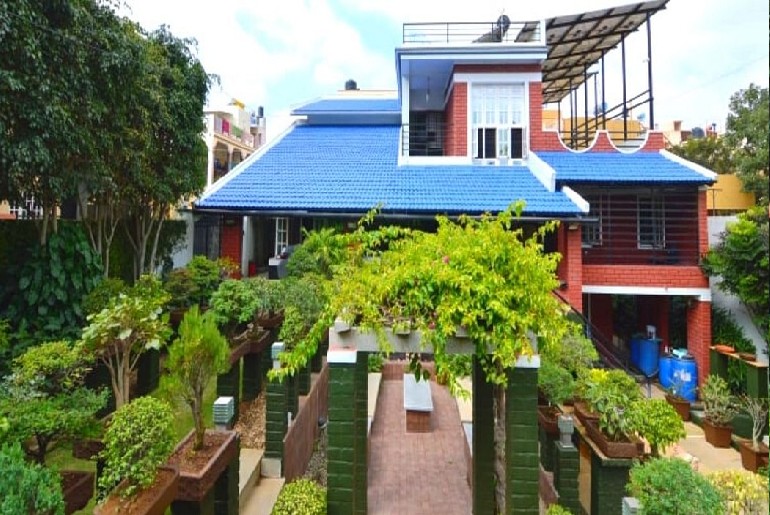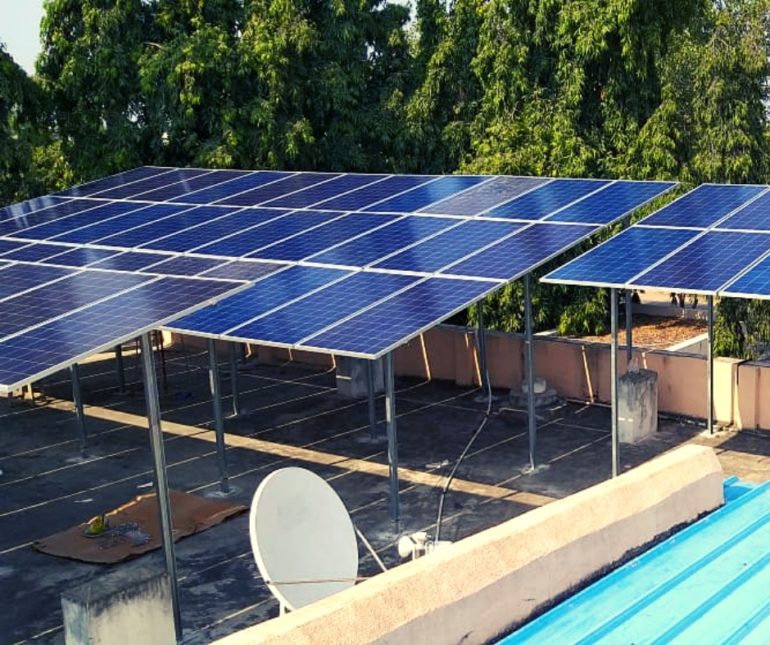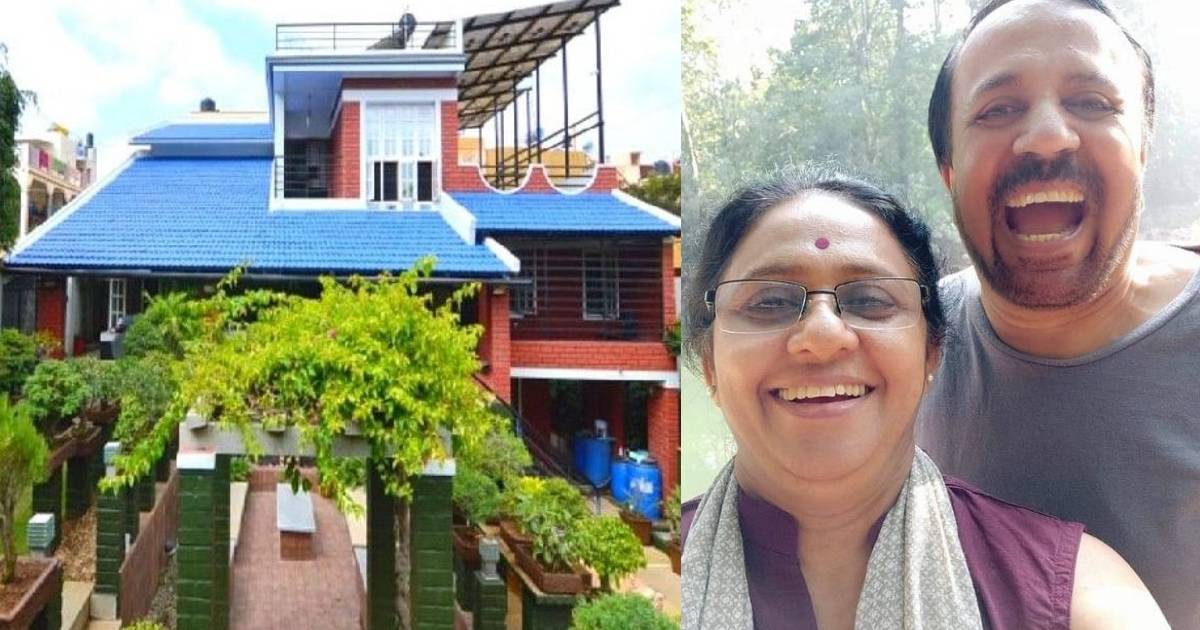Going green can seem like an insurmountable task but this Bengaluru couple has lots of practical suggestions for us. Majnu and Geeta are leading the way for an eco-friendly lifestyle by building an eco-friendly home, made of stones and bricks that entirely run on solar power. They also recycle their household waste and use it as fodder for their sprawling food garden. Here’s how they built their dream house.
The Couple Built Their Home With Stone & Bricks
As reported by The Better India, while building their home, they cut down the construction costs by 10 to 15% using materials like stones and bricks. Geeta did the interiors but they wanted to design their home in a way that would not harm the environment. They wanted to conserve energy and water for sustainable living.
Also read: Eco-Friendly Masks That Contain Tomato & Basil Seeds, Grow Into Plants When Disposed
The Home Has A Natural Cooling System
They haven’t installed air conditioners despite the soaring temperature of Bengaluru’s summer. Instead, they executed the concept of cross ventilation at different levels of his house so that the home remains cool. Because of the use of bricks, the temperature inside the house is 2 to 3 degrees lower than the temperature outside. Besides, the home has large openings that allow for plenty of natural light cutting down on artificial light usage.
Also read: Google Maps To Suggest More Eco-friendly Routes In The UAE

The Roof Has Solar Panels Installed For Power
To further save electricity, the couple also installed solar panels on the roof. Their 10-kilowatt solar installation generates around 1000 units of solar power every month. While they consume only around 250 units, they sell the surplus power to the electricity board. The electricity board pays them ₹9 per unit, as per the solar scheme. With the extra power, the couple earns ₹70,000 annually. Solar installation can cost you a lot but it guarantees concrete returns.

The Couple Also Harvests Rain Water
The couple has also been harvesting rainwater. Since the house sits on sloping terrain, all the water is pushed towards a site where the water percolates underground. The sand and gravel filters the water which is then transported to the borewell. This way the borewell is always full. This harvesting structure can store around 4,50,000 litres per year, of which they consume only 2,00,000 litres. Isn’t this model extremely sustainable?
Also read: Assam Friends Invent World’s First Bag-Less Tea Bags That Are 100% Eco-Friendly
#catchtherain to recharge dug wells – 💧Rainwater harvesting is a sustainable and great way to tackle #waterscarcity.
We have used this simple and effective model to recharge 699 dug wells in Elappully & Pudussery, Kerala through community support. pic.twitter.com/EfdxPLixQY
— WaterAid India (@WaterAidIndia) September 14, 2020
This couple is inspiring us to up our green game, what about you?
First Published: May 10, 2021 1:32 PM



